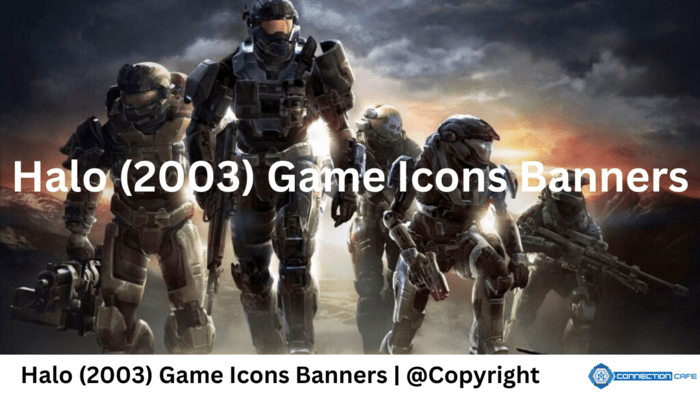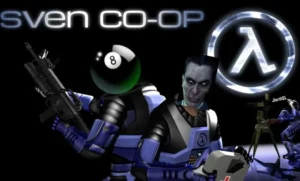Reliving the halo (2003) game icons banners: A Deep Dive into the Iconic Halo (2003) Game Icons and Banners
Do you remember the first time you played halo (2003) game icons banners Halo: Combat Evolved? The thrill of diving into the futuristic world, battling aliens, and feeling like a true Spartan soldier? One of the most iconic parts of that experience was the visuals—specifically, the game’s icons and banners. But what made these graphics stand out, and why do they still hold such a special place in the hearts of gamers? Let’s take a deep dive into the visual elements that defined this 2003 classic.
The Iconic Design Behind Halo (2003) Graphics
When you think of Halo: Combat Evolved, the halo (2003) game icons banners first image that likely comes to mind is the sleek, glowing Halo ring or Master Chief’s helmet. These visuals weren’t just random designs; they were carefully crafted symbols that embodied the game’s core themes. The design team aimed to create icons and banners that felt futuristic yet accessible, drawing players into a world that was both alien and familiar.
The key to these designs was simplicity paired with halo (2003) game icons banners striking detail. The game’s main icon, Master Chief’s helmet, is a perfect example of this balance. It’s instantly recognizable with its dark visor and green armor, representing both the character’s strength and mystery. This design wasn’t just about aesthetics; it was a visual shorthand for the hero you were about to become.
Banners That Set the Mood
The banners used in Halo (2003) played a significant halo (2003) game icons banners role in setting the tone for the game. Whether it was in the menu screens or promotional material, these banners were more than just background art; they were mood-setters. They featured dark tones, contrasted by glowing lights and ethereal designs, creating a sense of mystery and tension.
The banners often showcased dramatic scenes—such as halo (2003) game icons banners a looming spaceship or the vastness of the Halo ring—designed to make players feel like they were stepping into an epic, larger-than-life conflict. The use of deep blues, blacks, and metallic grays in the banners conveyed the seriousness of the game’s setting while adding to its futuristic aesthetic.
How Simplicity Enhanced Usability
One often overlooked aspect of Halo: Combat Evolved’s halo (2003) game icons banners icons and banners was how user-friendly they were. In the early 2000s, when game graphics were becoming more sophisticated, there was a risk of overcomplicating visual elements. Halo avoided this trap by keeping its interface simple and intuitive.
The game’s icons were easy to recognize and served clear halo (2003) game icons banners functions. For example, whether you were selecting weapons or navigating menus, the icons were clean, straightforward, and required little guesswork. This simplicity meant that players could focus more on gameplay and less on figuring out what each icon represented, enhancing the overall gaming experience.
The Cultural Impact of Halo’s Visuals
Beyond just their functionality, the icons and banners of halo (2003) game icons banners Halo (2003) became culturally significant in the gaming world. They didn’t just represent a game; they became symbols of an entire era of gaming. The helmet icon, for instance, became synonymous with first-person shooters and Xbox gaming culture. You could spot the emblem in gaming forums, fan art, and even on merchandise, solidifying its place in pop culture.
The banners also had a lasting impact. The image of a lone halo (2003) game icons banners Spartan standing against a vast, alien backdrop became a symbol of heroism and adventure in gaming. These visuals weren’t just there to decorate the game; they inspired a generation of gamers and set the standard for what a high-quality, immersive gaming experience should look like.
The Evolution of Halo’s Icons and Banners Over Time
As the Halo series progressed, its visual elements naturally halo (2003) game icons banners evolved. However, many of the core design principles from the 2003 game remained intact. Even in later installments, the series retained the minimalist yet powerful approach to icons and banners, although they became more detailed and polished with advancing technology.
The evolution shows a respect for the original design while adapting to new expectations. The simple, bold lines of the original helmet icon became more refined, and the banners, while more complex, maintained the same dramatic flair. These changes highlight how Halo was able to innovate while remaining true to its roots, a key factor in its continued popularity.
The Role of Community in Preserving Iconic Visuals
One of the most fascinating aspects of Halo’s icons and banners is how the gaming community has embraced and preserved them. Fan-made art, mods, and even custom merchandise have kept the original designs alive long after the game’s initial release. The love and dedication that fans have for these visuals demonstrate their deep emotional connection to the game.
There’s something timeless about the designs from halo (2003) game icons banners Halo (2003) that resonates with both old and new players alike. Whether it’s seeing the helmet icon in a fan video or spotting a banner recreated in a modern game, these visuals continue to hold a special place in the gaming world. This community-driven halo (2003) game icons banners preservation is a testament to the lasting impact of well-designed game graphics.
The Lasting Legacy of Halo’s Icons and Banners
Even after more than two decades, the icons and banners halo (2003) game icons banners from Halo: Combat Evolved remain iconic. They serve as a reminder of what made the game so groundbreaking and continue to influence game design today. halo (2003) game icons banners From their role in setting the mood to their cultural impact, these visual elements are more than just nostalgic throwbacks—they’re integral to the game’s enduring legacy.
In a world where game graphics are constantly evolving, there’s something uniquely comforting about the simplicity and boldness of Halo’s original designs. They serve as a reminder that sometimes, less is more, and that great design isn’t just halo (2003) game icons banners about looking good—it’s about telling a story and connecting with players on a deeper level.
Conclusion: Why the Visuals Still Matter Today
So, why do the icons and banners from Halo (2003) still matter today? It’s because they represent more than just a game. They represent a moment in gaming history, a leap forward in design, and a connection between players and the virtual world halo (2003) game icons banners they’re stepping into. Whether you’re an old-school gamer revisiting the classics or a newcomer curious about what made Halo such a phenomenon, the visuals are an essential part of understanding the magic behind the game.
These iconic designs remind us halo (2003) game icons banners that the best game art isn’t just about being flashy or technically advanced. It’s about creating symbols and scenes that resonate, that make players feel something, and that stick with them long after the game is over. In the case of Halo, the icons and banners did all of that and more, cementing their place in gaming history.



